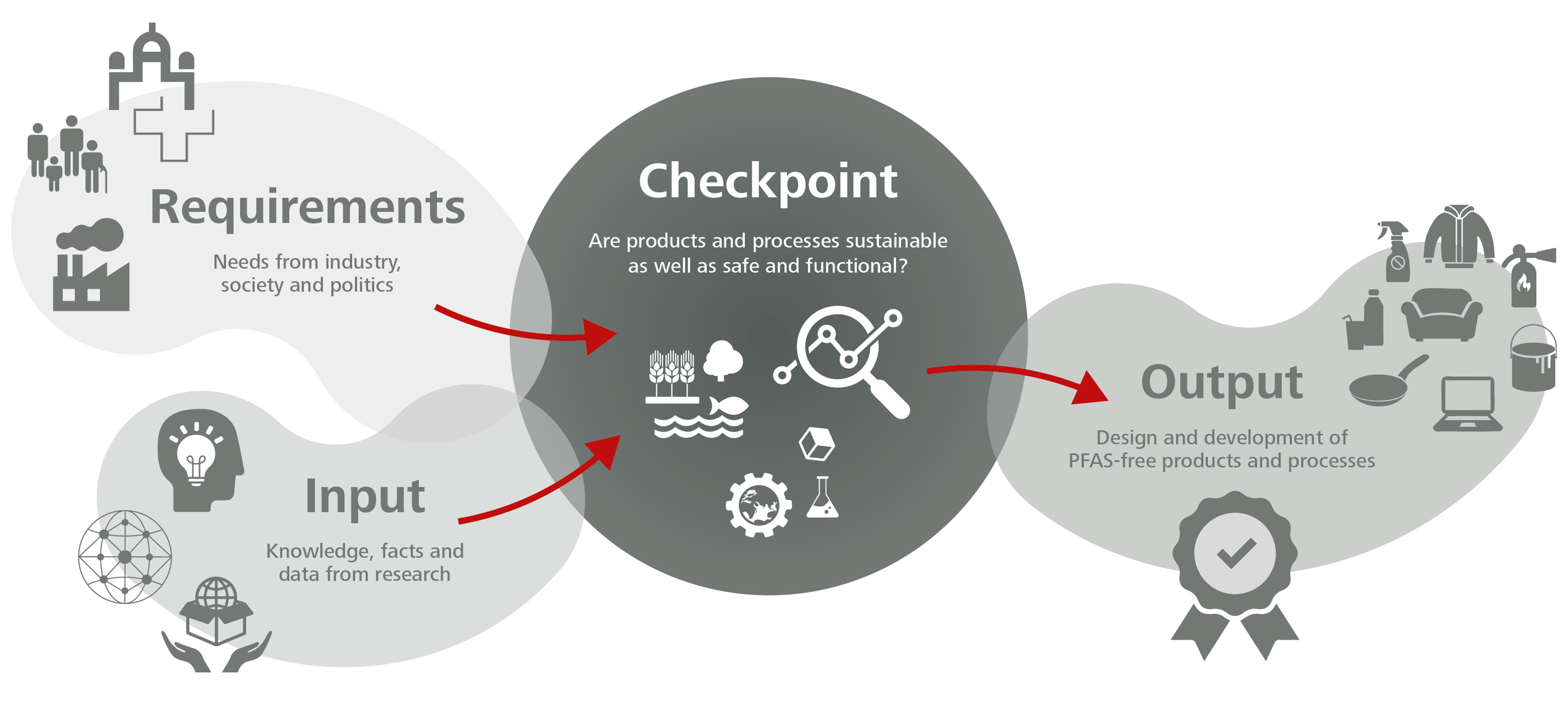Exposure for generations: PFAS in the environment
PFAS chemicals end up in the environment and pollute it for generations. The substances in this huge class of substances accumulate in the environment and many may accumulate in the human body. Some PFAS are linked to diseases such as cancer, metabolic disorders and immune damage or negative effects on fertility and babies in the womb. Transition to safe alternatives is therefore urgently needed. We provide the facts on exposure to this problematic class of substances – and shed light on what Empa, Eawag and the Ecotox Center are doing about it.

Why are PFAS hazardous?
PFAS are released into the environment during production, use and disposal. The substances are hardly broken down in nature and sometimes remain stable for hundreds of years. As a result, PFAS accumulate in the environment. Many PFAS spread particularly widely in water and through the air. They enter the soil and the food chain because they are easily absorbed by organisms. For this reason, these substances from the PFAS family should no longer be released into the environment; some of these substances are already banned.
People come into contact with PFAS mainly through food. In the body, many substances accumulate in internal organs. This poses health risks, and some PFAS are indeed associated with various diseases. For instance, harmful effects on the liver, kidneys and immune system are known. Some substances are also carcinogenic or impair fertility and the development of babies in the womb.
How can I avoid PFAS in everyday life?

- Avoid PFAS-containing products such as Teflon-coated frying pans and stain-repellent outdoor wear.
- Use reusable containers instead of disposable packaging.
- Fast food and frozen products such as ready-made pizza can also be contaminated with PFAS due to their processing and disposable packaging.
- Avoid cosmetics with “fluoro” in the list of ingredients and try to avoid water-resistant cosmetics as much as possible.
What are Empa, Eawag and the Ecotox Center doing?

Researchers at Empa, Eawag and the Ecotox Center are working on a variety of approaches to solve the problem of “Forever Chemicals”. For example, they are developing reliable analytical methods to measure known and (as yet) unknown PFAS and are investigating the transfer of PFAS from the environment into the food chain. Other teams are clarifying the degradation of PFAS in the environment and looking for innovative technologies to remove the substances from contaminated areas. Materials scientists are developing safe and sustainable materials so that PFAS can be replaced in everyday products. And finally, teams of experts support public authorities with further education and the development of threshold values.
Pocket Facts 02
(In)famous Allrounder:
PFAS – Forever Chemicals
Download the brochure
Dr. Paula Navascués
Advanced Fibers, Empa
Tel. +41 58 765 7004
PFAS-Abbau durch Plasma-induzierte Radikale
Dr. Christa McArdell
Umweltchemie, Eawag
Tel. +41 58 765 5483
PFAS-Einfang durch Aktivkohle
Dr. Serina Robinson,
Umweltmikrobiologie, Eawag
Tel. +41 58 765 6423
PFAS-Abbau mittels Enzymen
Prof. Dr. Manfred Heuberger
Advanced Fibers, Empa
Tel. +41 58 765 7878
-
Share
